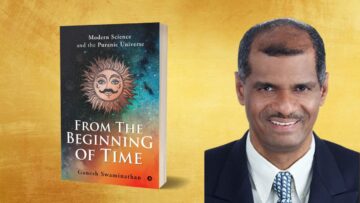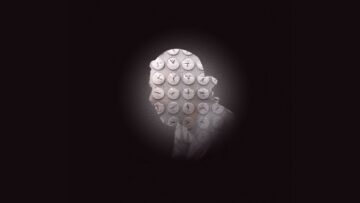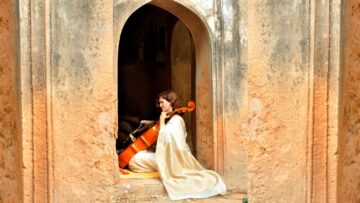Theme Srishti Sthithi Laya / Tridevi / Trimurti
Brahma, Vishnu, Maheshwara – the Trimurti in Sanatana Dharma and the Tridevi– Saraswathi, Lakshmi and Parvathi are ever present performing their divine functions – Srishti / creation, Sthiti/ preservation and Laya/ dissolution. The three aspects guide the bhakta’s expression of devotion and the expression of that devotion in the arts.
The visual power of depictions of the Trimurti and the Tridevi has kept the viewer and the bhakta engaged visually and spiritually for centuries. Explorations of the Vedas and Puranas magnificently open human observation to the divine and to Devata-Tatva. The bhakta’s observations meet his imagination, revealing for him, the inner manifestations of the deities and Devata-Tatva. The episodic details allied with the manifestations find ageless and tangible expressions in the depictions created by him. These are part of his life-long offerings to the divine.
Responding to the the prominent Trimurti/Tridevi of the particular Purana, the narrative on Srishti-Sthiti-Laya sees newer dimensions and expressions. Pauranic stories present their own sets of Srishti-Sthiti-Laya realms performed by Trimurtis/Tridevis.
With the creative motive of expanding the field for art expressions on the theme of Srishti, Sthithi, Laya, Heritage and Indic Academy call for works in visual art for display at the annual GUDIYA SAMBHRAMA, the Temple Festival, under a dedicated segment “Divya Varna”.
“Heritage” is a not-for-profit Trust located in Bangalore and organises annually a thematic festival “Gudiya Sambhrama” the Temple Festival. The 2024 edition will mark the 15th year of the festival. The festival is celebrated in various temple venues across the city for 3 to 4 weekends – beginning the 3rd week of January. The theme for 2024 is Srishti Sthithi Laya / Tridevi / Trimurti.
We call upon Indic visual artists to create original traditional art work that is representative of Srishti-Sthiti-Laya / Trimurti /Tridevi,
- Art work can represent any one or more of the Trimurti-s/Tridevi-s or their various manifestations.
- Creations should be representative of Srishti-Sthiti-Laya Tatva
- Paintings can be water colour or oil on canvas. Vigrahas can be bronze, terracotta, stone or any other medium,
- A title and a 100 word write up on the concept of the art work is required.
- The work should adhere to a Dharmic voice. Within this boundary, artists are encouraged to assume creative liberty and imagination. aligned to the Dharmic voice and within Dharmic aesthetic.
- Artists will be responsible for the transportation of their art work to the venue and back.
- Artists to submit photographs of their art creation with a detailed write-up to namaste@indica.org.in.
- Last date for submission will be the 1st of December 2023.
- Information on the selected work will be shared with artists by 15th December 2023.
- Selected framed paintings to reach us on 24th of January.
- “Divya Varna” exhibition will run from 25th to 28th January 2024.
- Artists to pick up their work on 29th January 2024 by noon.

GUDIYA SAMBHRAMA 2024
Theme : Srishti, sthiti, and laya
Brahma, Vishnu, Maheshwara – the Trimurti in Sanatana Dharma and the Tridevi– Saraswathi, Lakshmi and Parvathi are ever present performing their divine functions – Srishti / creation, Sthiti/ preservation and Laya/ dissolution. The three aspects guide the bhakta’s expression of devotion and the expression of that devotion in the arts.
According to Advaita Vedanta, there is a beginning-less and endless cycle of creation, maintenance and dissolution or resolution, called ‘srishti’, ‘sthiti’, and ‘laya’. This is indeed fascinating as it strongly complies with the concept of matter converting into energy and back.
Energy converting into matter is called sristhi. In each srishti, or creation, the variety and pattern of objects, the attributes of the bodies and minds and the events and situations have to be fashioned to suit the energy it carries. This is also related to the concept of karma.
Matter in various modes of motion is sthiti. This is the mode of existence that human beings normally refer to. This is the stage of maintenance. The third stage of this cycle is laya or the stage of resolution. Laya is matter converting into energy. This conversion can be at any level. In-fact, on a large-scale, laya can even attain the form of ‘pralaya’. Pralaya should not be confused with doomsday. Doomsday means the end. Pralaya, on the other hand, is just a part of a never-ending cycle of creation (srishti), maintenance (sthiti) and resolution (laya), which is endless and has no beginning either.






